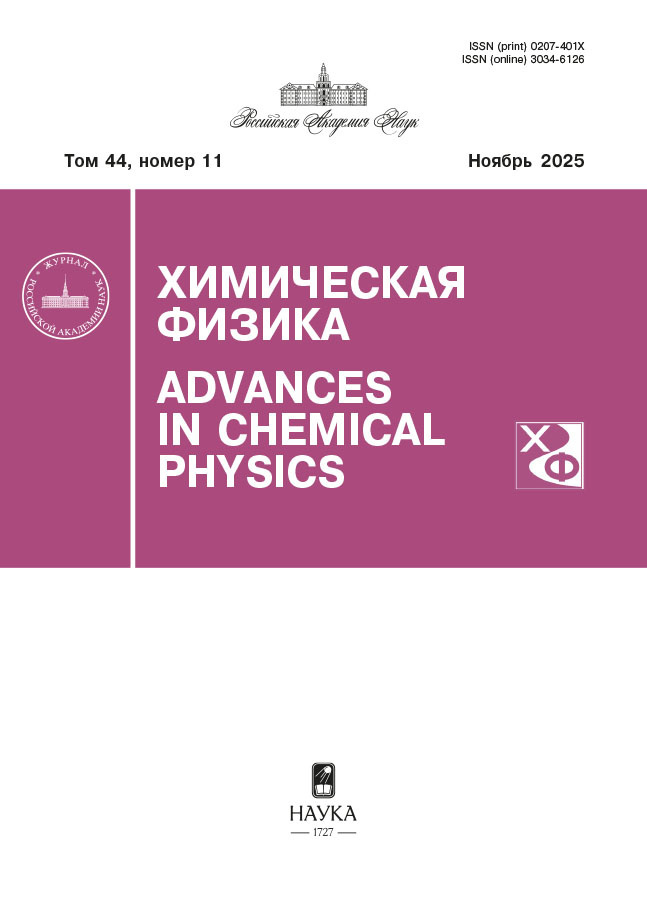Piezoelectric properties of composite polymer materials based on PVDF
- Авторлар: Golovanov E.V.1, Fionov A.S.1, Kashin V.V.1, Kolesov V.V.1
-
Мекемелер:
- Kotelnikov Institute of Radio Engineering and Electronics, Russian Academy of Sciences
- Шығарылым: Том 44, № 11 (2025)
- Беттер: 3-8
- Бөлім: Электрические и магнитные свойства материалов
- URL: https://journals.eco-vector.com/0207-401X/article/view/696394
- DOI: https://doi.org/10.7868/S0207401X25110018
- ID: 696394
Дәйексөз келтіру
Аннотация
The paper examines composite polymer materials based on a PVDF matrix, which differ in filler material. Polyvinylidene fluoride (PVDF) is an organic polymer material with a significant piezoelectric effect. Currently, due to its physical and chemical properties, it is actively used for the development and creation of acousto-electronic devices, including sensors for various purposes, as well as in flexible electronics devices. Using Raman spectroscopy and dielectric spectroscopy methods, it is shown that the electrophysical properties of a composite material based on PVDF are determined by the formulation and manufacturing conditions. The additional polarization of the PVDF composite with various fillers in an external electric field directly during the creation of samples will significantly improve the electrophysical properties (coefficient of electromechanical coupling, dielectric constant). At the same time, the use of solid-state fillers significantly improves the mechanical and operational properties of such composites.
Авторлар туралы
E. Golovanov
Kotelnikov Institute of Radio Engineering and Electronics, Russian Academy of Sciences
Email: kasper_96.96@mail.ru
Moscow, Russia
A. Fionov
Kotelnikov Institute of Radio Engineering and Electronics, Russian Academy of Sciences
Email: kasper_96.96@mail.ru
Moscow, Russia
V. Kashin
Kotelnikov Institute of Radio Engineering and Electronics, Russian Academy of Sciences
Email: kasper_96.96@mail.ru
Moscow, Russia
V. Kolesov
Kotelnikov Institute of Radio Engineering and Electronics, Russian Academy of Sciences
Хат алмасуға жауапты Автор.
Email: kasper_96.96@mail.ru
Moscow, Russia
Әдебиет тізімі
- Zhou L., Luo J., Li Q. et. al. // J. Funct. Mater. 2018. V. 49. № 12. P. 12079. https://doi.org/10.3969/j.issn.1001-9731.2018.12.011
- Aghayari S. // Heliyon. 2022. V. 8. № 11. P. e11620. https://doi.org/10.1016/j.heliyon.2022.e11620
- Fotouhi S., Akrami R., Ferreira-Green K. et al. // IOP Conf. Ser.: Mater. Sci. Eng. 2019. V. 659. P. 012085. https://10.1088/1757-899X/659/1/012085
- Абдрашитов Э. Ф, Крицкая Д. А., Бокун В. Ч. и др. // Хим. физика. 2015. Т. 34. № 4. С. 87. https://doi.org/10.7868/S0207401X15040020
- Anjana J., Prashanth K.J., Sharma A.K., Arpit J., Rashmi P.N. // Polym. Eng. Sci. 2015. V. 55. Ussue 7. P. 2589. https://doi.org/10.1002/pen.24088
- Bužarovska A., Kubin M., Makreski P. et al. // J. Polym. Res. 2022. V. 29. P. 272. https://doi.org/10.1007/s10965-022-03133-z
- Guo S., Duan X., Xie M. et al. // Micromachines. 2020. V. 11. P. 1076. https://doi.org/10.3390/mi11121076
- Голованов Е.В., Кашин В.В., Горбачев И.А. и др. // РЭНСИТ: Радиоэлектроника. Наносистемы. Информационные технологии. 2024. Т. 16. № 7. С. 829. https://doi.org/10.17725/rensit.2024.16.829
- Фионов A.С., Колесов В.В., Фионова В.А. и др. // Хим. физика. 2023. Т. 42. № 11. С. 79. https://doi.org/10.31857/S0207401X2311002X
Қосымша файлдар









